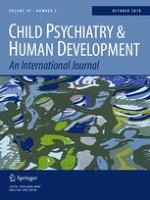13-02-2018 | Original Article
Assessing Acute Secondary Treatment Outcomes in Early-Onset Obsessive–Compulsive Disorder
Gepubliceerd in: Child Psychiatry & Human Development | Uitgave 5/2018
Log in om toegang te krijgenAbstract
Obsessive–compulsive disorder (OCD) in children under 8 years of age, referred to as early-onset OCD, has similar features to OCD in older children, including moderate to severe symptoms, impairment, and significant comorbidity. Family-based cognitive behavioral therapy (FB-CBT) has been found efficacious in reducing OCD symptoms and functional impairment in children ages 5–8 years with OCD; however, its effectiveness on reducing comorbid psychiatric symptoms in this same population has yet to be demonstrated. This study examined the acute effects of FB-CBT vs. family-based relaxation treatment over 14 weeks on measures of secondary treatment outcomes (non-OCD) in children with early-onset OCD. Children in the FB-CBT condition showed significant improvements from pre- to post-treatment on secondary outcomes, with a decrease in overall behavioral and emotional problems, internalizing symptoms, as well as overall anxiety symptom severity. Neither condition yielded significant change in externalizing symptoms. Clinical implications of these findings are considered.
